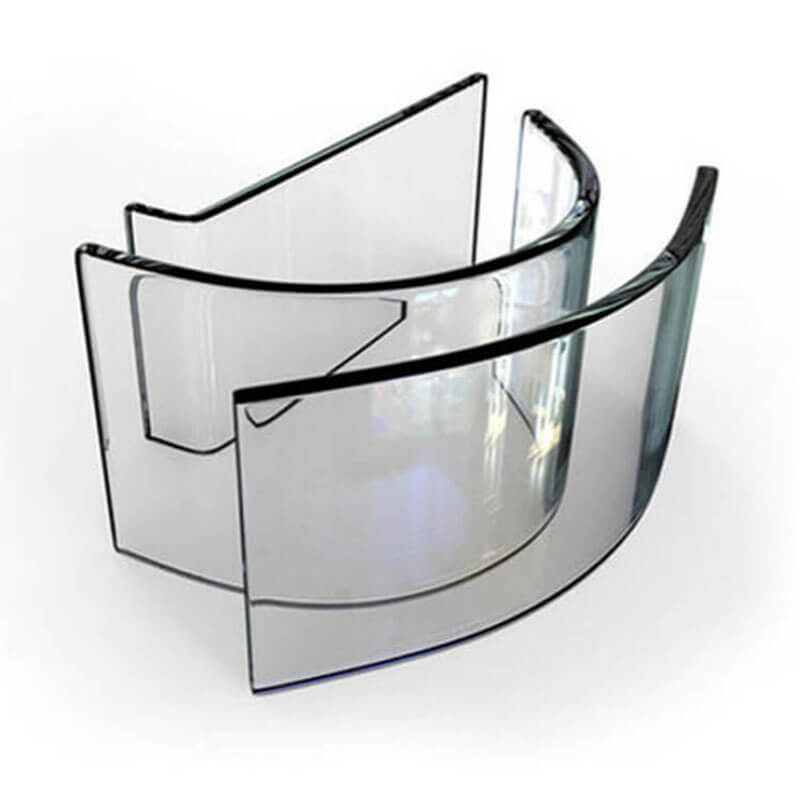The principle of chemically tempered glass is based on the ion exchange process. It refers to the exchange and filling between potassium ions(K⁺) and sodium ions(Na⁺) in a high-temperature alkaline solution, thereby forming a balanced structure of surface compressive stress and internal tensile stress in the glass, which significantly improves the strength and durability of the glass. Physical tempering is limited by the thickness of the glass, glass thickness less than 2mm cannot undergo physical tempering. Chemical strengthening is most suitable for thin(0.1-3mm), high-flatness, alkali metal ion-containing glass that requires impact resistance/scratch resistance or has complex shapes, and is especially widely used in high-precision fields such as consumer electronics, optics, and automotive displays.
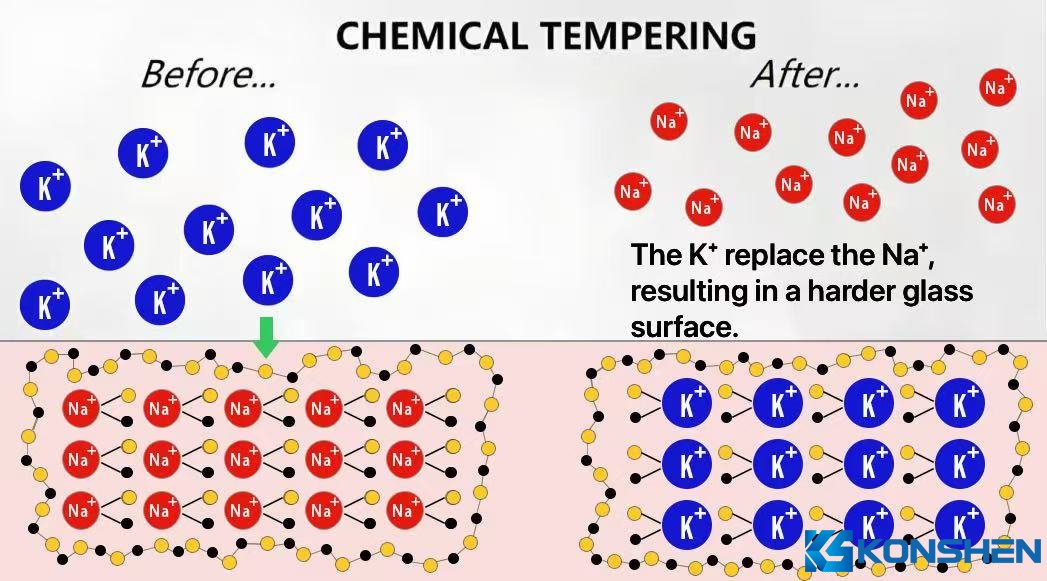
The details are as follows:
Difference in Ion Properties
The main component of glass is silicon dioxide (SiO₂), which also contains some alkali metal ions such as sodium ions (Na⁺). The potassium salt (potassium nitrate, KNO₃) used in glass chemical strengthening contains potassium ions (K⁺) with a larger radius than sodium ions. Specifically, the radius of sodium ions is approximately 0.102 nm, while that of potassium ions is about 0.138 nm.
High-Temperature Ion Exchange
The glass is immersed in molten potassium nitrate at around 420-430°C. At this temperature, sodium ions in the glass diffuse from the glass surface into the molten salt, while potassium ions in the molten salt diffuse into the surface layer of the glass. Due to the larger radius of potassium ions compared to sodium ions, "crowding" occurs in space when potassium ions occupy the original positions of sodium ions.
Formation of Compressive Stress Layer
As ion exchange continues, a large number of potassium ions fill the surface layer of the glass, putting the glass surface in a compressed state and thus forming a compressive stress layer.
Mechanism of Strength Improvement
When the glass is subjected to external force, it first counteracts the surface compressive stress. Only when the external force is large enough to overcome the surface compressive stress will it cause tensile stress in the interior of the glass, which in turn leads to glass breakage. Therefore, chemically strengthened glass after ion exchange strengthening can withstand greater external impact, with significantly improved scratch resistance and fracture resistance.
Performance Improvement
The impact strength can be increased by 5-10 times, the bending strength by 3-5 times, and the scratch resistance by approximately 1.5-2 times.
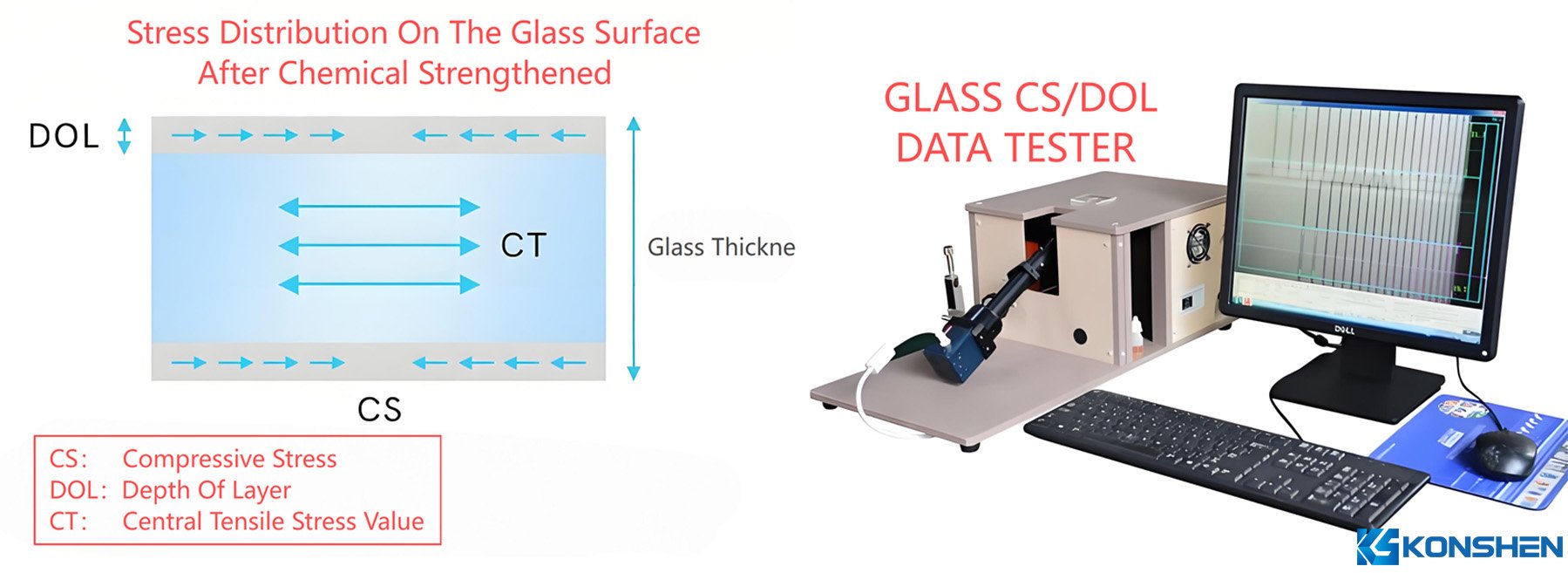
Several Key Parameters in Surface Stress Testing
CS (Compressive Stress)
This is one of the core indicators in test reports, usually measured in MPa. It represents the magnitude of compressive stress borne by the glass surface area. In general, the CS value of thermal tempered glass is required to be above 90 MPa, and some high-demand scenarios even require it to exceed 120 MPa; for chemically strengthened glass, the CS is typically required to be higher than 450 MPa.
DOL (Depth of Layer)
DOL refers to the depth that the compressive stress layer extends into the glass, usually measured in micrometers (μm). This indicator reflects the thickness of the strengthened layer. For chemically strengthened glass, the DOL is generally required to be above 20 μm. A deeper DOL indicates a thicker strengthened layer, which provides stronger internal protection for the glass and better fracture resistance.
Stress Distribution Curve
Some testing equipment will output a graph showing how stress changes with depth. Through this curve, one can observe how compressive stress decays with depth, whether there are abnormal fluctuations, and whether it conforms to the typical distribution pattern (usually showing an exponential or slow downward trend).
If the stress distribution is abnormal—such as a too-rapid drop in compressive stress or the appearance of a "tensile stress zone" in the middle—it may indicate that the parameter settings during the glass strengthening process are unreasonable.

Here are the some reference datasheet of DOL & CS of some common used glass:
Soda-lime Glass: CS(400-750 Mpa), DOL(5-10 μm)
Mid-Aluminum Glass: CS(450-750 Mpa), DOL(8-10 μm)
High-Aluminum Glass: CS(650-800 Mpa), DOL(35-50 μm)
Corning CG3 Glass: CS(800-950 Mpa), DOL(Over 50 μm)
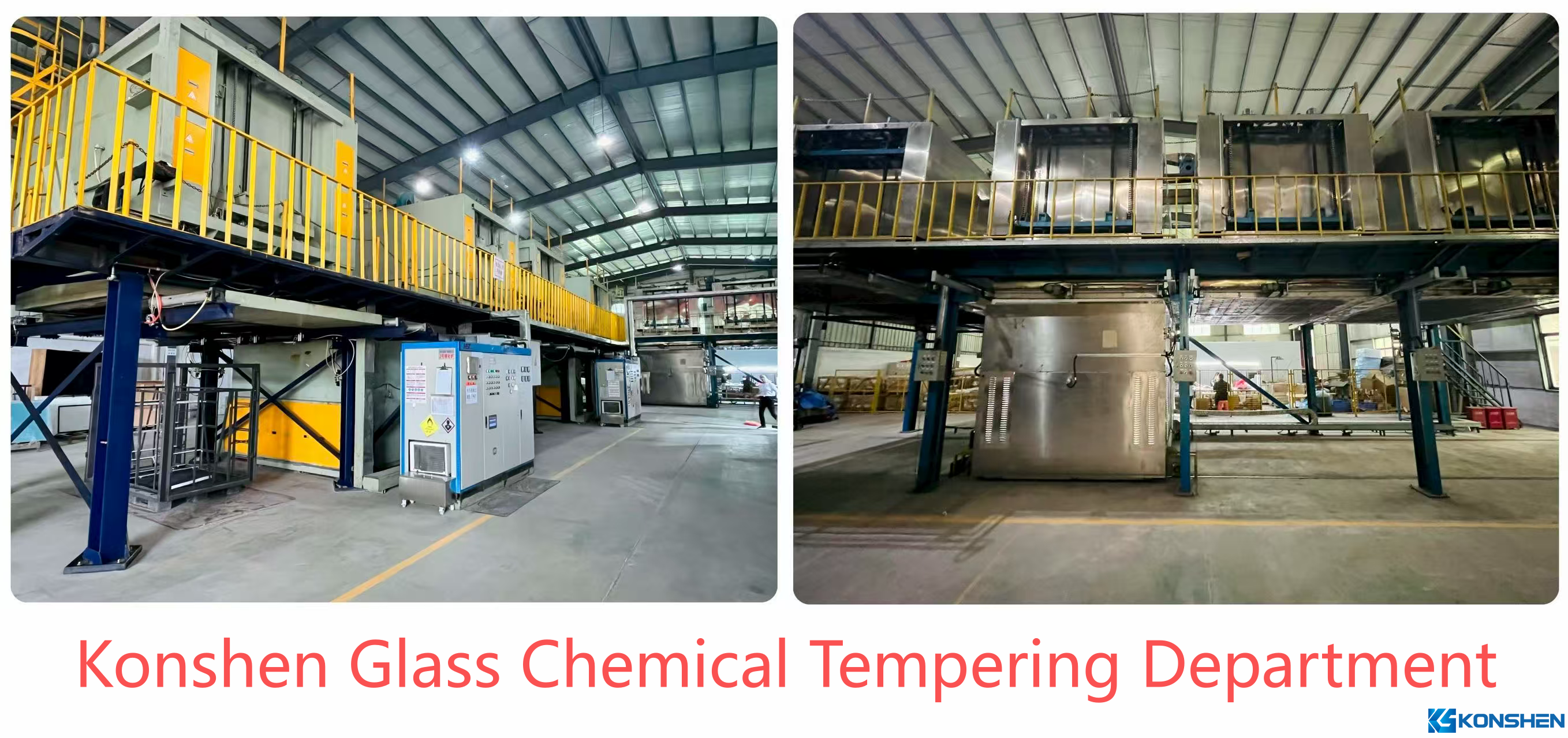
KONSHEN GLASS owns the largest chemical tempering furnace in southern China, with a furnace capacity of 23 tons and a maximum glass processing size of 2700*1600mm. With over 20 years of professional experience in chemical tempering, please contact us to find the most suitable chemical strengthened solution.
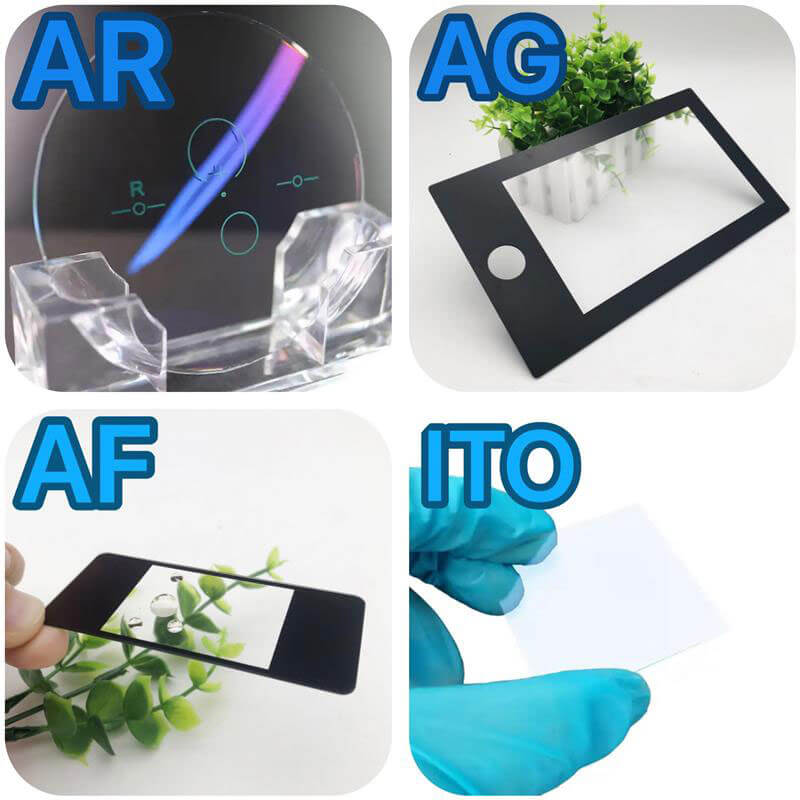 Coated GlassElevate your projects with advanced coated glass solutions from KS Glass.
Coated GlassElevate your projects with advanced coated glass solutions from KS Glass. Cover GlassUpgrade your devices with our cover glass.
Cover GlassUpgrade your devices with our cover glass.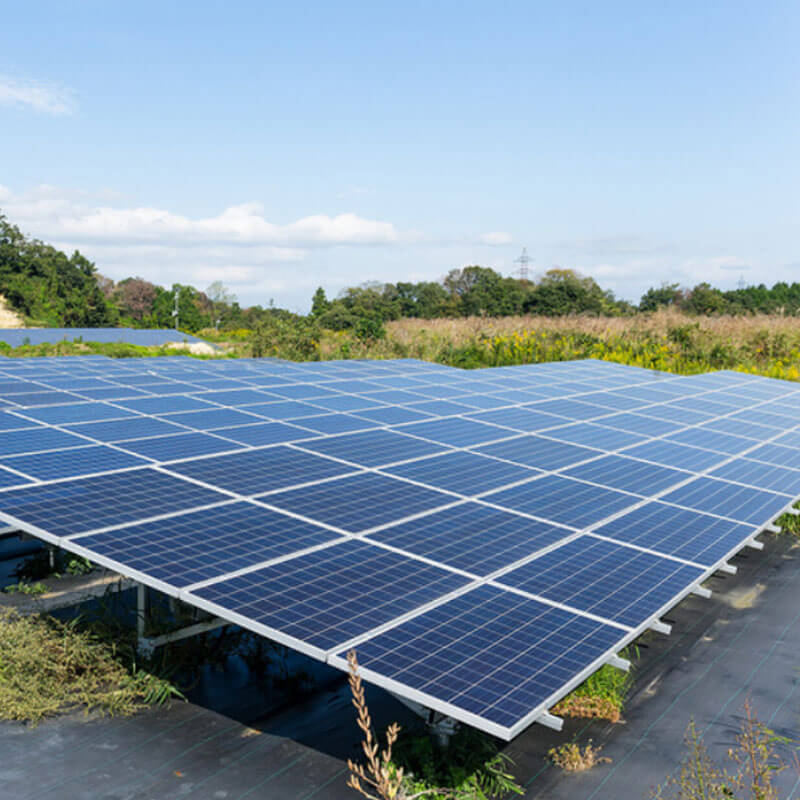 Solar Panel GlassUpgrade your devices with our cover glass.
Solar Panel GlassUpgrade your devices with our cover glass.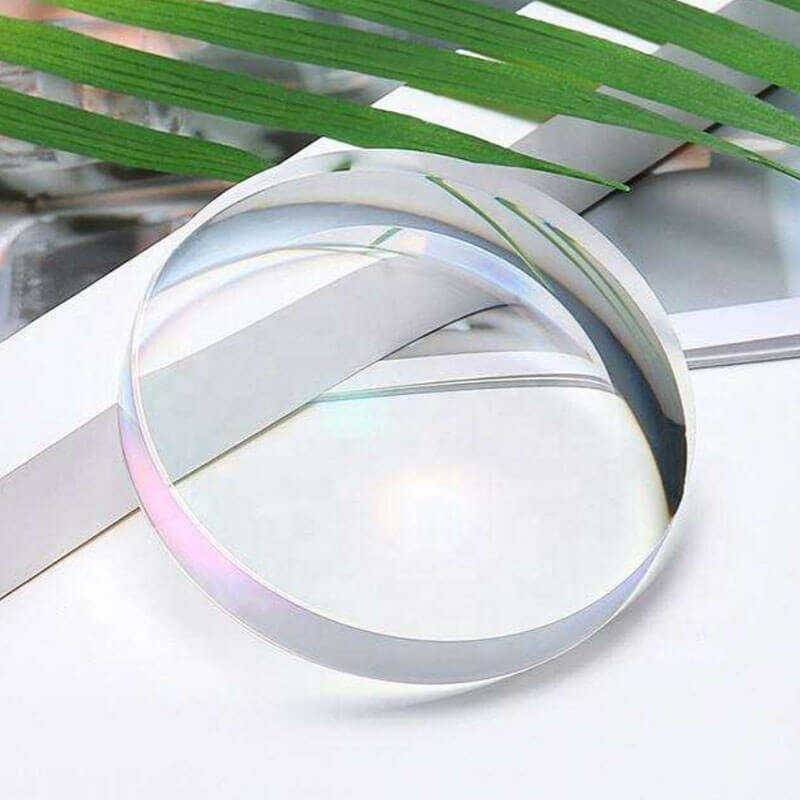 Glass MaterialDiscover the endless possibilities of working with large glass material.
Glass MaterialDiscover the endless possibilities of working with large glass material.
